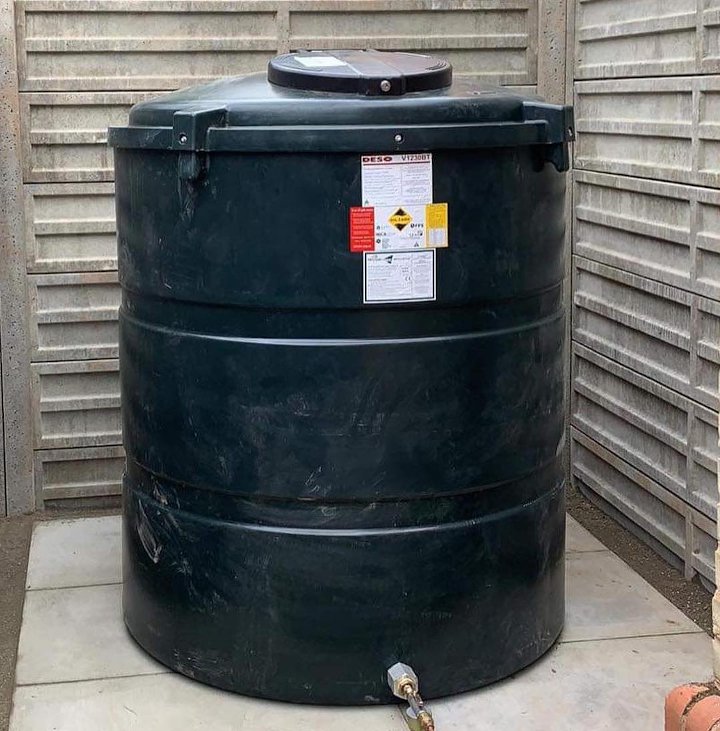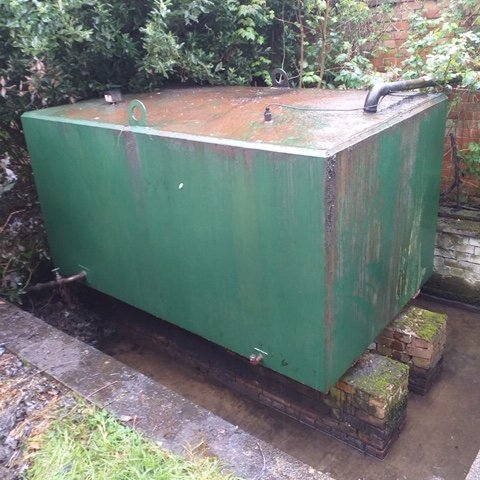Oil Tank Safety Regulations
Oil tank safety regulations ensure the safety of your property and the environment. Last month, we provided an overview of current oil tank regulations, focusing on location and installation; this month, we would like to discuss what these regulations mean for fire and environmental safety in more detail.
If you want an overview of installation regulations, our post – Oil Tank Regulations: An Overview will provide that information.
FIRE SAFETY REGULATIONS
Regarding fire safety regulations, it is a misconception that strict protection elements are in place because fires start in the tank. Rather, safety barriers and location restrictions ensure the tank and its contents don’t catch light from a fire that originated outside the tank.
FIRE SEPARATION DISTANCES
OFTEC regulations state a minimum distance your tank should be from your home or any structures on your property to ensure the safety of you and your home:
- 1.8m away from non-fire rated eaves of a building
- 1.8m away from a non-fire rated building or structure (e.g. garden sheds)
- 1.8m away from openings (such as doors or windows) in a fire rated building or structure (e.g. brick-built house/garage)
- 1.8m away from liquid fuel appliance flue terminals
- 760mm away from a non-fire rated boundary, such as a wooden boundary fence
- 600mm away from screening (e.g. trellis and foliage) that does not form part of the boundary.
This can make it tricky for people who might not have the space to comply with these distances, which is where a fire barrier comes in.

OIL TANK FIRE BARRIER
A fire barrier can be used to comply with oil tank regulations when space is at a minimum. To ensure you do comply when a fire barrier is needed, it must:
- have a minimum 30-minute fire rating
- extend at least 300mm higher than any part of the tank
- extend at least 300mm wider than any part of the tank
- be installed a minimum of 300mm away from the tank to allow room for tank inspection – please note this distance can change and is specified by the tank manufacturer
Fire barriers are typically made from highly fire-resistant materials. The most common approved materials are concrete, bricks, and fire-resistant panels.
When it comes to deciding whether you are going to install a fire barrier, it is essential to seek guidance from a local OFTEC registered engineer. They will be able to guide you through exactly what you need to do to comply with current regulations.
ENVIRONMENTAL SAFETY REGULATIONS
Having an oil tank on your property is a big responsibility, especially when it comes to ensuring it is safe and does not pose a risk to the environment. You are responsible for ensuring your tank is in good working order to avoid spills, leaks, and contamination. Not only are oil leaks costly to clean up, they are also extremely hazardous and cause long-lasting damage to the local environment.
For this reason, environmental safety regulations are in place to mitigate the risk of oil spills and comply with environmental protection laws. If your tank is near a water source that provides drinking water, further regulations will apply, especially around the type of tank you can have on your property. Installing a bunded oil tank is a good idea, as it provides added protection against leaks.
The oil tank owner is responsible for ensuring the tank is in good condition and monitoring for any issues that can cause a leak. Annual tank services are recommended, though you can take steps at home to check on your tank, which we have covered in more detail in our piece Why Regular Oil Tank Servicing is Important.

OIL TANK SAFETY FAQs
HOW CAN I MINIMISE ENVIRONMENTAL IMPACT DURING INSTALLATION?
When installing an oil tank, you are advised to work with an OFTEC-registered engineer who can ensure your tank is located in the best place possible and that the installation process is smooth.
WHAT IS CONSIDERED A FIRE BARRIER
A fire barrier is an external structure designed to prevent fire from spreading from one area to another. It acts as a barrier to protect an oil tank and its contents from fire. Fire barriers are typically constructed using fire-resistant concrete, bricks, or specialised fire-resistant panels.

